Ever wondered how to skyrocket your website’s reach across thousands of search queries? The secret weapon might just be Programmatic SEO. This innovative approach is reshaping the digital landscape, offering a method to automate and optimize vast quantities of web content.
Let’s dive deep into what Programmatic SEO entails, its benefits, potential drawbacks, and how it can be the game-changer for your business’s online strategy.
What is Programmatic SEO?

Programmatic SEO refers to the process of using automation to create and optimize a large number of web pages. This strategy is particularly useful for websites that have the potential to generate vast amounts of content based on their data, such as e-commerce sites, real estate listings, travel portals, and job boards. The idea is to systematically create pages that target specific keywords across various categories or locations, making it possible to cover a broad range of search queries and intents.
At its core, programmatic SEO involves identifying patterns in the types of queries users make related to a business’s products or services and then automating the creation of content that addresses those queries. This can include generating unique page titles, meta descriptions, and body content that are tailored to specific search terms, all done on a scale that would be impractical to do manually.
The goal is to increase the site’s visibility in search engine results pages (SERPs), driving more organic traffic by matching a wide array of user searches with relevant, optimized content. This approach requires a solid understanding of SEO principles, data analysis, and the technical capability to implement automation in content generation and optimization.
What Are The Benefits of Programmatic SEO?
Diving into Programmatic SEO opens up a world of possibilities for businesses. It offers a scalable, efficient, and data-driven approach to SEO that can significantly enhance a website’s search visibility, user experience, and overall performance in organic search results.

Here are some key benefits of adopting programmatic SEO:
Scalability
One of the most significant advantages is the ability to scale your SEO efforts. Programmatic SEO allows you to generate pages for thousands of keywords across different categories, niches, or locations, making it easier to target a broader audience without the need for manual page creation.
Efficiency
Automating the creation and optimization of web pages saves a tremendous amount of time and resources. This efficiency enables your team to focus on other critical aspects of SEO and digital marketing strategies, such as content creation, link building, and user experience improvements.
Improved Search Visibility
By targeting long-tail keywords, which are often less competitive and more specific, programmatic SEO can improve your site’s visibility in search engine results pages (SERPs). This increased visibility can lead to higher organic traffic levels, as you’re able to capture users at various stages of the search intent funnel.
Enhanced User Experience
Programmatic SEO can also be used to create more personalized and relevant content for users. By using data to understand user intent and preferences, you can automatically generate pages that meet specific user needs, improving overall user experience and potentially increasing conversion rates.
Data-Driven Decisions
The use of algorithms and data analysis in programmatic SEO allows for more informed decision-making. You can quickly identify which strategies are working and which aren’t, enabling you to pivot or double down on certain keywords or topics based on performance metrics.
Cost-Effectiveness
Although there’s an initial investment in setting up programmatic SEO processes, the long-term cost savings are significant. Automating the bulk of your SEO efforts can reduce the need for additional manpower and resources, making it a cost-effective solution for expanding your online presence.
Pros & Cons of Programmatic SEO
Programmatic SEO is a powerful strategy for amplifying your website’s reach and visibility in search engines. By automating the creation of web pages targeted at a wide array of search queries, businesses can capture a broader audience. However, like any strategy, it comes with its own set of advantages and disadvantages. Understanding these can help you navigate potential pitfalls and leverage programmatic SEO effectively.
Pros
Extensive Keyword Coverage
Programmatic SEO allows you to target a vast number of long-tail keywords simultaneously. With the broad coverage of keyword research for programmatic SEO, you can significantly increase your site’s visibility in search engine results, attracting more traffic.
Time and Resource Efficiency
Automating the process of page creation and optimization saves considerable time and resources. This efficiency enables your team to allocate more effort toward other critical tasks, such as content quality and user experience improvements.
Scalability
With programmatic SEO, scaling your SEO efforts to accommodate more products, services, or information becomes straightforward. This scalability is particularly beneficial for large eCommerce sites, directories, and informational portals with extensive inventories or content needs.
Data-Driven Optimization
Leveraging algorithms and data analytics allows for more informed SEO strategies. You can quickly adapt to trends, user behavior, and performance metrics, ensuring that your SEO efforts are always aligned with your goals and audience needs.
Cons
Quality Control Challenges
When generating a large number of pages automatically, maintaining consistent quality and relevance can be challenging. Poorly executed programmatic SEO may lead to the creation of low-quality or duplicate content, potentially harming your SEO performance.
Risk of Search Engine Penalties
If not carefully managed, programmatic SEO can result in practices that search engines might perceive as spammy or manipulative, such as keyword stuffing or creating thin content, leading to penalties.
Complexity in Implementation
Setting up a programmatic SEO system requires technical expertise and a deep understanding of SEO principles. The complexity of implementing and maintaining these systems can be a barrier for some businesses.
Over-Reliance on Automation
While automation can significantly enhance efficiency, over-relying on it may lead to missed opportunities for personalization and human touch in content creation, which are crucial for engaging and retaining users.
What Are The Three Pillars of Programmatic SEO?

Programmatic SEO is built on a foundation that aims to maximize your website’s visibility in search engine results through strategic automation. These are its three critical pillars. These pillars ensure that your automated content not only reaches a wide audience but also meets the specific needs of that audience, ultimately driving more traffic and engagement.
Let’s dive into these foundational elements:
1. Low-Competition Keywords
Focusing on low-competition keywords is essential in programmatic SEO. These are specific, often long-tail keywords that have a lower search volume but also less competition. Targeting these keywords allows you to capture niche markets and rank higher in search results more easily. By effectively targeting low-competition keywords, you can attract targeted traffic to your site, increasing the likelihood of conversion.
2. Search Intent
Understanding and catering to search intent is crucial for the success of programmatic SEO. Search intent refers to the purpose behind a user’s search query, which can generally be categorized into four types:
- Navigational: The user is looking for a specific website or page.
- Informational: The user seeks information, such as answers to questions or solutions to problems.
- Commercial: The user is considering a purchase and wants to compare options or find reviews.
- Transactional: The user intends to buy a product or service.
Creating content that aligns with the user’s search intent ensures that your pages are relevant and valuable to your audience, improving your site’s authority and trustworthiness in the eyes of both users and search engines.
3. User Experience (UX)
The third pillar, user experience (UX), involves designing your web pages to provide the best possible experience for visitors. This includes fast page load times, mobile optimization, intuitive navigation, and high-quality, engaging content. A positive user experience is vital for retaining visitors, reducing bounce rates, and encouraging conversions. Moreover, search engines like Google consider UX factors when ranking websites, making this an essential component of any SEO strategy, including programmatic SEO.
How To Get Started With Programmatic SEO
Embarking on a programmatic SEO journey can significantly enhance your website’s reach and visibility on search engines. Here’s a step-by-step guide to get you started with programmatic SEO, ensuring your efforts are both efficient and effective.
Find Keywords That Scale
The first step in programmatic SEO is to identify keywords that can be scaled. Look for long-tail keywords with low to medium competition that are relevant to your niche. These keywords should have enough search volume to drive traffic but not so much competition that ranking for them would be difficult. Tools like Google Keyword Planner, Ahrefs, or SEMrush can help you discover these keywords and assess their potential for scaling.
Check Search Intent
Once you have a list of potential keywords, analyze the search intent behind each one. Understanding whether users are looking for information, products, services, or something else will guide the type of content you need to create. Tailoring your content to match search intent is crucial for attracting the right audience and achieving higher engagement rates.
Find Relevant Data
For programmatic SEO to work, you need access to relevant and structured data that can be used to automate content creation. This data might come from your own databases, public data sets, or scraping the web, provided you comply with legal and ethical guidelines. The data should be closely related to your keywords and search intent, providing valuable information that can be dynamically inserted into your web pages.
Build Your Pages
With your keywords, search intent, and data in hand, the next step is to build your web pages. This involves creating templates for different types of pages, such as product pages, information articles, or category pages. These templates should be designed with SEO best practices in mind, including optimized title tags, meta descriptions, and content structures. Automation tools can then populate these templates with your data, creating unique and SEO-friendly pages at scale.
Publish Content to Your Website
The final step is to publish the generated content to your website. Ensure that all pages are correctly linked within your site structure, providing a good user experience and making it easy for search engines to crawl and index your new pages. Regularly monitor the performance of your programmatic SEO pages, using analytics to track traffic, engagement, and rankings. Use these insights to refine your strategy, making adjustments to keywords, templates, or data as needed.
Need to Implement A Programmatic SEO Strategy? Consult With LeadOrigin Today!
Getting started with programmatic SEO might seem daunting, but by breaking it down into these manageable steps, you can effectively increase your website’s visibility and traffic in a scalable way.
If you’re looking to implement a programmatic SEO strategy but aren’t sure where to start, LeadOrigin is here to guide you. As an industry frontrunner in SEO services, we’ve mastered the art of both local and national SEO, serving a diverse clientele across Austin, Dallas, Houston, TX, and the San Francisco Bay Area. Our expertise isn’t just limited to established businesses; we’re passionate about propelling startup companies to new heights, helping them to flourish in competitive markets.
Whether you’re aiming to dominate local search results or make a splash on the national scene, LeadOrigin has the tools, knowledge, and experience to make it happen. Our comprehensive SEO solutions are tailored to meet the unique needs of your business, ensuring that your programmatic SEO strategy is seamlessly integrated with your overall digital marketing efforts.
Don’t let the complexity of programmatic SEO hold you back. Explore our services and see how we can help transform your digital strategy:

